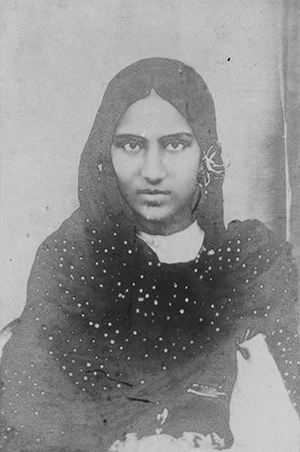Shahpur, PUNJAB / Shimla, BRITISH INDIA :

Syeda Muhammadi Begum was the first woman in the Indian sub-continent to be the editor of a weekly magazine,‘Tehzeeb-e-Niswaan’. The Urdu magazine was dedicated to emancipate the women. The magazine came out with its first edition on 1st July, 1898.
Muhammadi Begum started her work along with her husband Mumtaz Ali. Mumtaz, who had also written a book stressing upon the rights of women, ‘Huqooq-e-Niswaan’, was a Darul Uloom, Deoband educated Lahore based publisher. He was a close associate of Sir Syed Ahmad Khan during the later years of the leader of Aligarh Movement. In fact, a hostel has been named after Mumtal Ali in AMU. Muhammadi and her husband realised that its was important that Muslim women also access modern education along with Muslim men. It must be kept in mind that when the magazine was launched Aligarh College was only a boys institution and there was no women’s college in Aligarh.
In fact, Sir Syed Ahmad Khan disagreed with Mumtaz and Muhammadi on women’s education. It was not until the demise of Sir Syed that they actually launched the magazine for women.
Muhammadi Begum, born in 1878 in Shahpur, Punjab, married Mumtaz Ali in 1897 after the death of his first wife. Syed Muhammad Shafi, father of Muhammadi, was the Principal of Wazeerabad High School and ensured that his daughters received modern education. In fact, Muhammadi used to play cricket and ride horses as well in those days when women were kept inside homes. When she married Mumtaz, he was already owning a publishing house and a printing press in Lahore.
Within a year, Muhammadi learned the art of publishing, editing and proofreading from her husband. She could read English, Hindi, Urdu, Persian and Arabic. Soon the first Urdu weekly dedicated to the cause of women was launched, ‘Tehzeeb-e-Niswaan’.
As expected, people did not take such progressive magazine positively. Muhammadi and Mumtaz used to send free complimentary copies to the well known educated people. In return they would receive the copies back along with letters abusing Muhammadi. The magazine picked very slowly and even after three months only 70 people subscribed to the magazine, after three years 345 and after five years 428.
Muhammadi had one son, Imtiaz Ali, whom he used to affectionately call Taj. She used to write stories, poems, plays and lullabies especially for him. She trained him to be a man of literary taste. Imtiaz grew up to edit the magazine and established himself as one of the greats of Urdu literature.
Muhammadi later launched another magazine for women, ‘Musheer-e-Madar’, in 1905. Which did not survive much after her death. She also established schools for women. A very interesting experiment carried out by Muhammadi was of an all-Women shop. This shop was operated by the women and for the women and no man was allowed inside the shop for any work. Interestingly, the title of Ashraf Ali Thanvi’s Bahishti Zewar is inspired by one of the poems written by Muhammadi.
From 1897, Muhammadi’s life was busy with social work. She edited magazines, wrote essays, stories, poems and held public meetings to emancipate the women of India. This hard work took a great toll on her health and left this world at a young age of 30, in 1908.
(Author is a well known historian)
source: http://www.heritagetimes.com / Heritage Times / Home> Women / by Saquib Salim / September 14th, 2020








